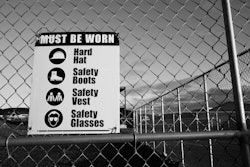
In the asphalt maintenance and reconstruction industry, we’re laser-focused on delivering a quality product to our clients, smooth, durable pavements that stand the test of time. But here’s a question that doesn’t get asked enough: How do we treat our internal customers?
It’s a concept that might sound foreign at first, especially in a trade where “customers” typically mean the property owners or general contractors footing the bill. Yet, after years of running an asphalt business, I’ve come to see that treating every crew member as a customer to the next in line can transform not just the end product, but the entire operation.
Redefining The Customer In Asphalt Work
In our world, the customer isn’t just the end user. It’s every person on your team who relies on the work done before them. From the laborer sweeping the site to the supervisor signing off on the final inspection, everyone’s got an internal customer.
The prep crew serves the crack-sealing team, who in turn sets up the sealcoating crew, who hands off to the striping team. Each step in this chain is a transaction, and
the “product” being delivered is the foundation for the next phase. If we strive to make that handoff as flawless as possible, the ultimate client—the one writing the check—gets a pavement that exceeds expectations.
Consider a standard sealcoating project. The prep crew clears debris, the crack-sealing team fills every fissure, the sealcoating crew applies a uniform protective layer, and the striping crew lays down crisp, clean lines. If the prep crew misses patches of dirt, the crack-sealers might overlook hidden “sinkers” those deceptive cracks that re-emerge later. If the sealcoating crew skimps on coverage, even the most precise striping can’t salvage the job.
The result? A subpar pavement that fails prematurely, leaving the client dissatisfied and your crew scrambling to fix it. Treating each phase as a service to the next crew flips this dynamic on its head, ensuring quality cascades through the process.
A Checklist System For Accountability
So how do we operationalize this idea? I’ve taken inspiration from aviation. Pilots don’t take off without running through a pre-flight checklist—every time, no exceptions. What if we applied that rigor to asphalt maintenance? Imagine a system where each crew evaluates the work they inherit from the team before them. The crack-sealing crew rates the prep team’s cleanliness. The sealcoating crew scores the crack-sealing team’s thoroughness. The striping crew assesses the sealcoat
application. It’s a simple 1-to-5 scale, documented and reviewed.
This isn’t about blame, it’s about visibility. As a business owner or project manager, you gain a real-time snapshot of where the process falters. Is the prep crew under-equipped? Is the sealcoating team rushing? These ratings pinpoint weaknesses before they become costly callbacks. More importantly, they foster accountability. Crews know their work will be judged by peers, not just the boss, which sparks a sense of ownership. It’s no longer “good enough”; it’s “good enough for the next team to succeed.”
Turning Insights Into Improvement
The real power lies in what you do with this feedback. Consistent low scores from the crack-sealing crew might signal a need for better blowers or more training on the prep side. If the striping team flags uneven sealcoat, it could mean adjusting equipment or schedules to prevent corner-cutting. The data guides your decisions, whether it’s investing in tools, refining techniques, or tightening oversight. The endgame? A final inspection where everything aligns—100% satisfaction, no punch-list items, and a client who doesn’t hesitate to recommend you.
This approach scales effortlessly. For a two-person outfit, it’s as simple as you and your partner holding each other accountable—one preps, the other seals, and you both check the work. For a 100-person operation, it’s a structured system keeping dozens of moving parts in harmony. Regardless of size, the principle holds: every handoff matters.
The Ripple Effect: Quality, Morale, and Profit
Since adopting this internal-customer mindset, I’ve seen tangible benefits across my business. Job quality has spiked—fewer cracks resurface, sealcoat lasts longer, and lines pop with precision. But the gains go beyond the pavement. Crew morale has climbed because team members see their role in the bigger picture; they’re not just clocking hours, they’re delivering for each other. Performance improves as accountability becomes collective, not top-down. And the bottom line? Happier clients mean fewer warranty repairs, more referrals, and a reputation that wins bids.
In an industry where margins can be tight and competition fierce, rethinking how we treat our internal customers offers a competitive edge. It’s not just about maintaining asphalt—it’s about maintaining a process that delivers excellence at every step. So, next time you’re on a job site, ask yourself: Am I setting my internal customer up for success? The answer could pave the way to your best season yet.




















